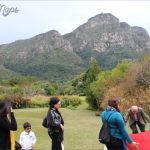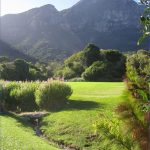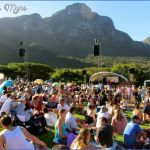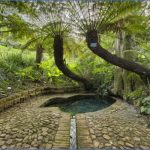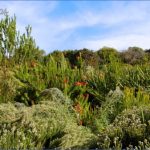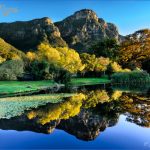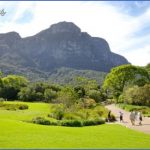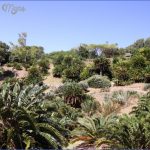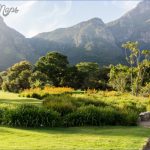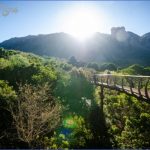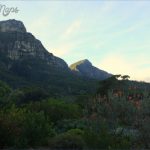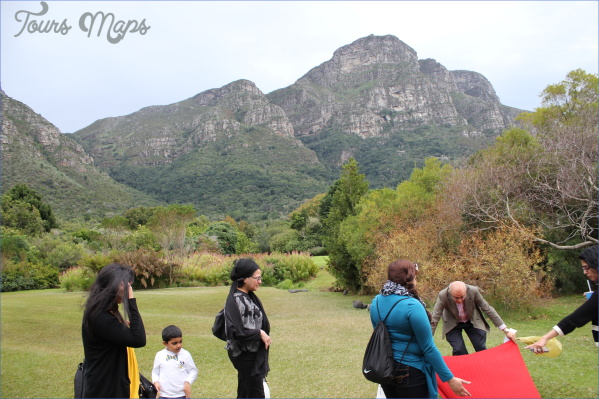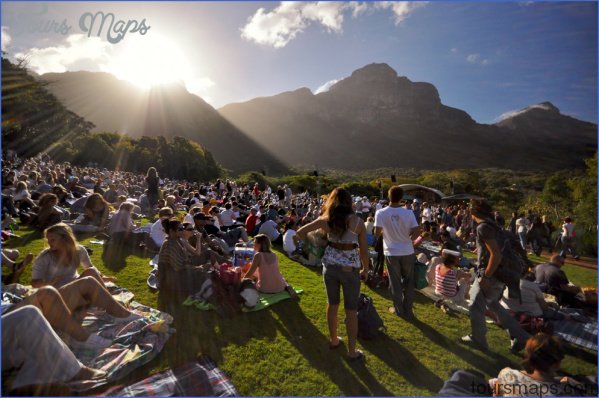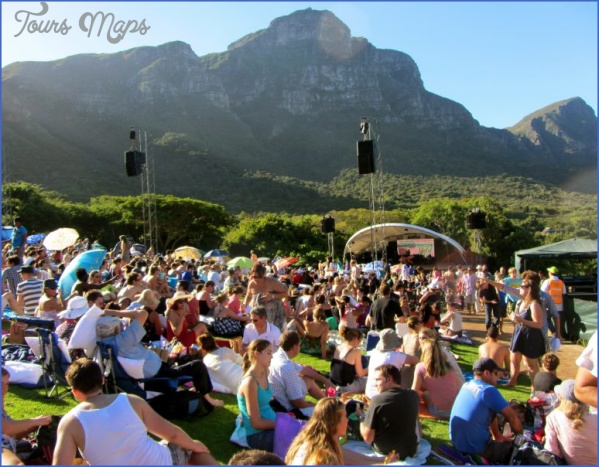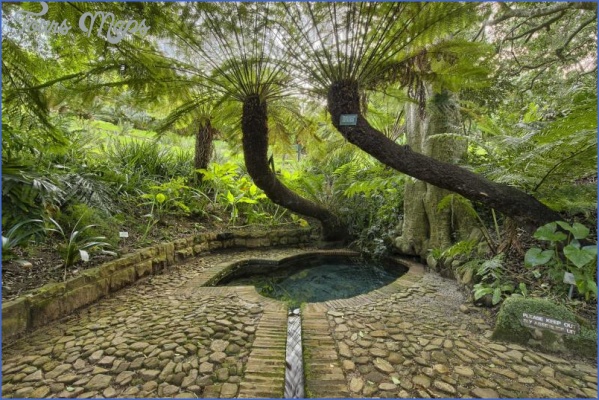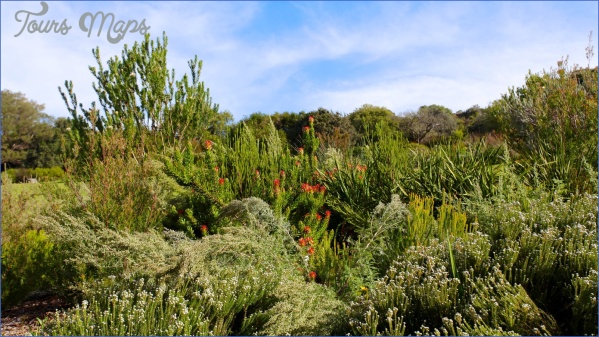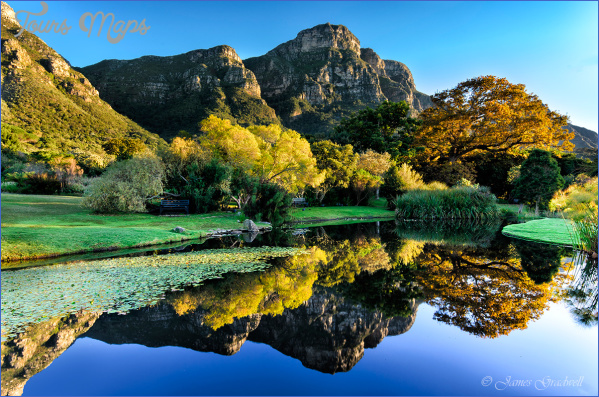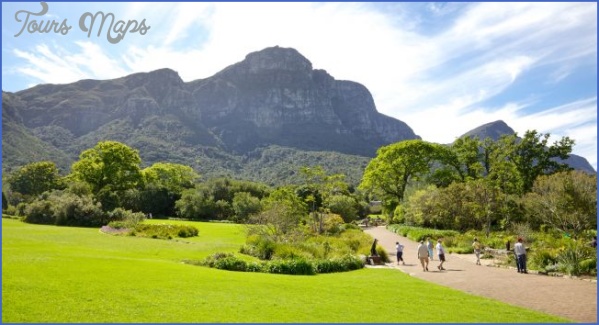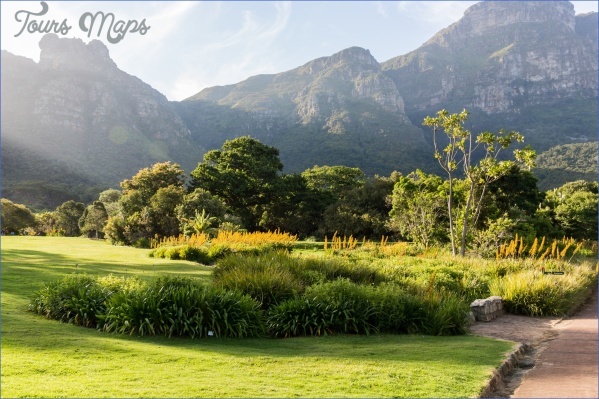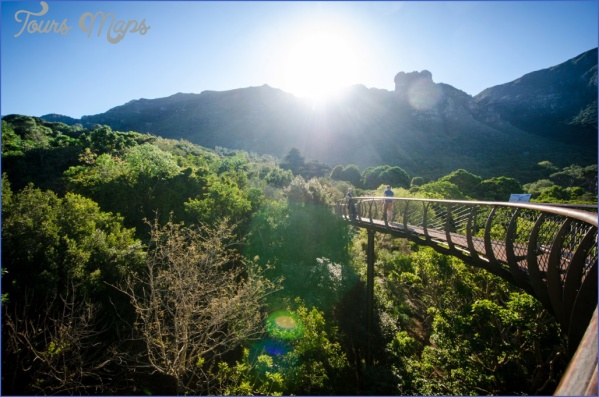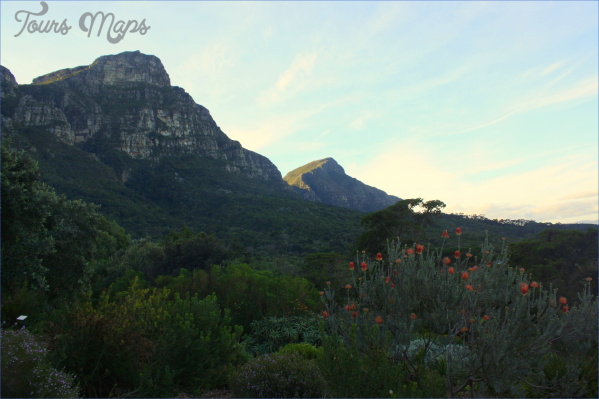The Kirstenbosch Threatened Species Programme has 23 Cape lowlands species in restoration programmes – two of which are extinct in the wild. One of the most remarkable and exciting stories to come out of Kirstenbosch in recent years was that of the beautiful Whorled Erica – Erica verticillata.
Members of the Millennium Seed Bank team return from a productive collecting trip in Mountain Fynbos. In chapter 4 we discussed the European plant collectors Franz Boos and Georg Scholl who, in the 1780s, collected impressive numbers of plants that were soon flowering in the gardens of Schonbrunn and Belvedere palaces in Vienna. Remarkably, many of these species survived the turmoil of wars and political upheaval for over two centuries, while back home, some have not fared so well – and, perhaps least well of these, Erica verticillata, a hardy, tall-growing erica with splendid mauve-pink flowers. The sandy plains of the Cape Flats were the natural habitat of this erica. A wilderness in the 1780s, the area is now almost totally transformed by urban and agricultural development. Indeed, today the Cape lowlands constitute one of the most threatened ecosystems of South Africa. Detailed surveys of land transformation for the entire country were conducted by Mathieu Rouget and colleagues at the Kirstenbosch Research Centre during 2004. These concluded that only 19 per cent of Acid Sand Plain Fynbos remains, and none of this is formally protected. In contrast, the Cape Peninsula mountain fynbos has 94 per cent intact and 90 per cent protected. By 2011 the area of undisturbed Acid Sand Plain Fynbos had dropped even further, to less than 14 per cent of its former range. The seeds of threatened species such as Erica verticillata are propagated at the Kirstenbosch seed orchard for restoration purposes. A specimen of Erica verticillata was found in Kirstenbosch by Garden foreman Adonis Adonis in 1990.
Trips To Kirstenbosch National Botanical Garden Package Photo Gallery
E. verticillata was last known from a herbarium specimen collected on the Cape Flats in 1908 -never to be seen in natural populations again. Deon Kotze, while erica specialist at Kirstenbosch in the 1980s, tracked down surviving specimens in a municipal garden in Pretoria, and at Kew. Yet another specimen – possibly a remnant from plantings during the earliest days of the Garden – was found in 1990 in an overgrown area in the middle of Kirstenbosch by Garden foreman Adonis Adonis.
So, by 1990, three clones of E. verticillata were available for propagation and possible reintroduction to their natural habitat. When Anthony Hitchcock followed up on this enigmatic species, his colleague Ted Oliver, erica specialist at the Compton Herbarium, recalled having seen E. verticillata at the gardens of Belvedere Palace in Vienna during a visit in 1967. Hitchcock visited these collections in 2005, and found no fewer than 20 species of erica growing happily in the nursery – many of these now rare and threatened in their natural habitats, but having survived at Belvedere since the 1780s.
With some high-level support from the South African Ambassador to Austria and the Austrian Minister of Agriculture, the many bureaucratic hurdles to repatriating some living material of E. verticillata were overcome. When the material eventually arrived in Kirstenbosch, it was found to represent two clones, one pink and one red. Molecular studies at the Kirstenbosch Research Centre and the University of Cape Town have confirmed that the living collection includes five distinct clones of E. verticillata. Today Kirstenbosch has a robust gene bank of this species, for nearly a century recognised as ‘extinct in the wild’.
Having built up a collection of E. verticillata, the next step was to reintroduce the plants to their natural habitat. Pioneering work on reintroduction undertaken by Dalton Gibbs of the Rondevlei Nature Reserve was followed up by a team drawn from the City of Cape Town, CapeNature, the University of Cape Town, Kirstenbosch and the owners of Kenilworth Racecourse – surprisingly, Cape Town’s premier racecourse provided one of the few intact areas of Acid Sand Plain Fynbos that remain in a highly urbanised area.
After a promising site for reintroduction had been found, with a signed Memorandum of Understanding between all partners, more hurdles had to be overcome. The 42 hectares of land in the centre of the racecourse had not been burnt for over 100 years. Despite this, the site is home to 271 species of indigenous plant, of which at least 19 are included in the Red List. The ecologists and horticulturists all agreed that, prior to reintroduction, the land should be carefully cleared of all alien species and then burnt. But on the agreed date for the burn, in February 2004, an outbreak of horse influenza occurred and the horses stabled on the racecourse could not be moved from the quarantine stables, situated near to the path of the planned fire. And so the burn had to be postponed until March 2005.
Maybe You Like Them Too
- Top 10 Islands You Can Buy
- Top 10 Underrated Asian Cities 2023
- Top 10 Reasons Upsizing Will Be a Huge Travel Trend
- Top 10 Scuba Diving Destinations
- World’s 10 Best Places To Visit

